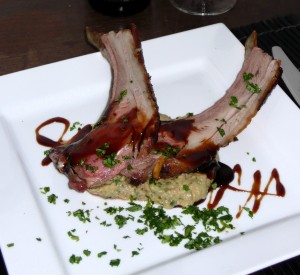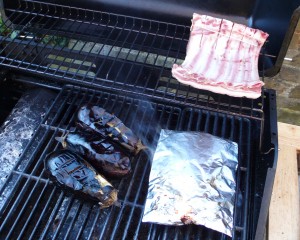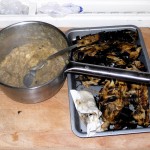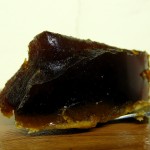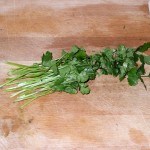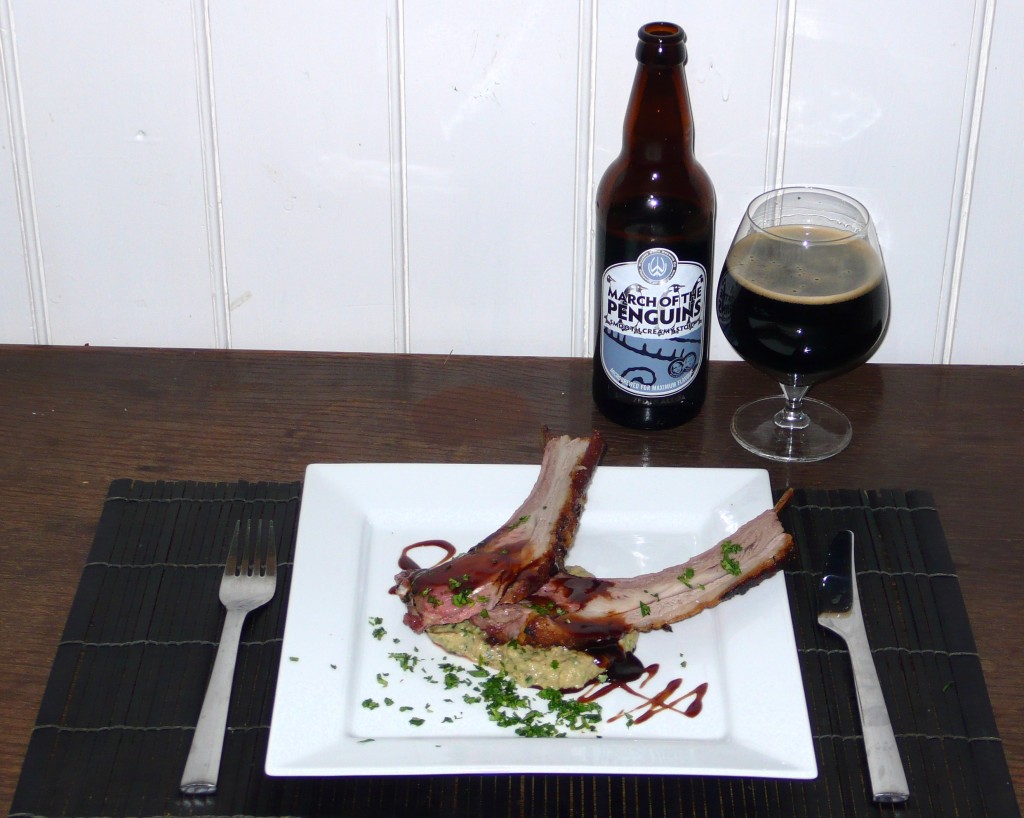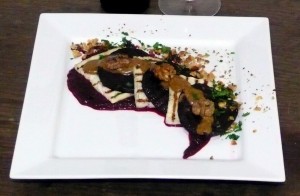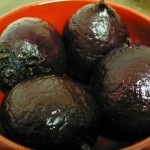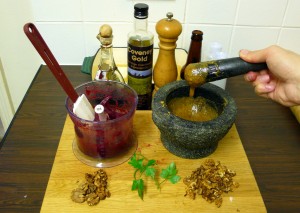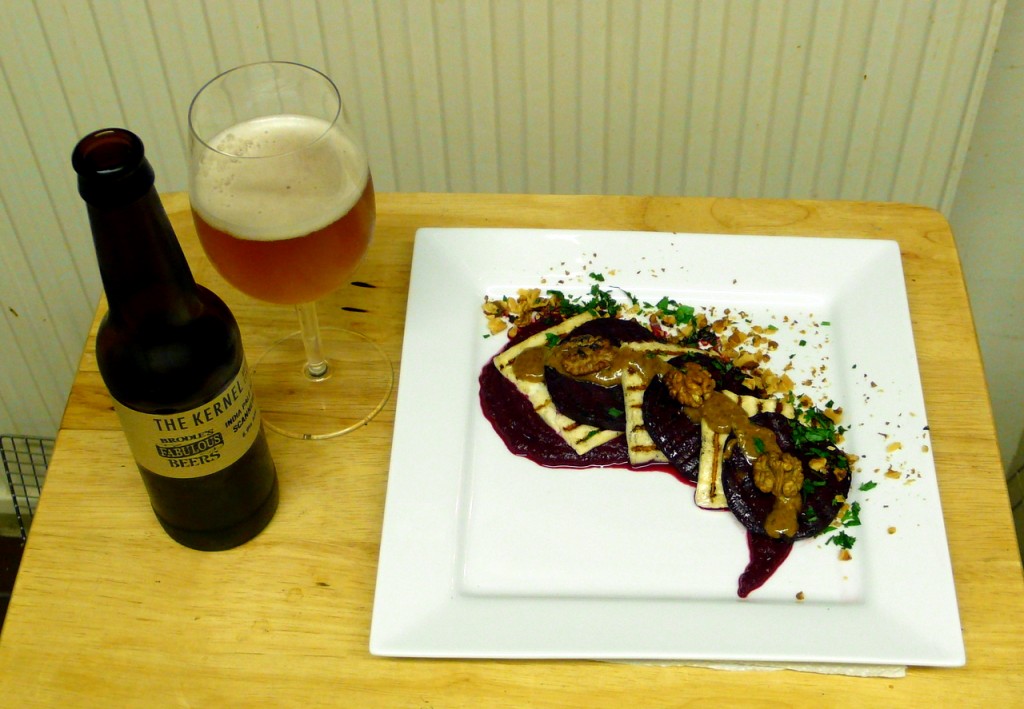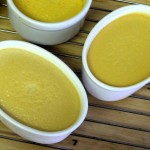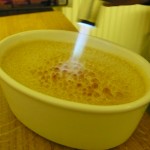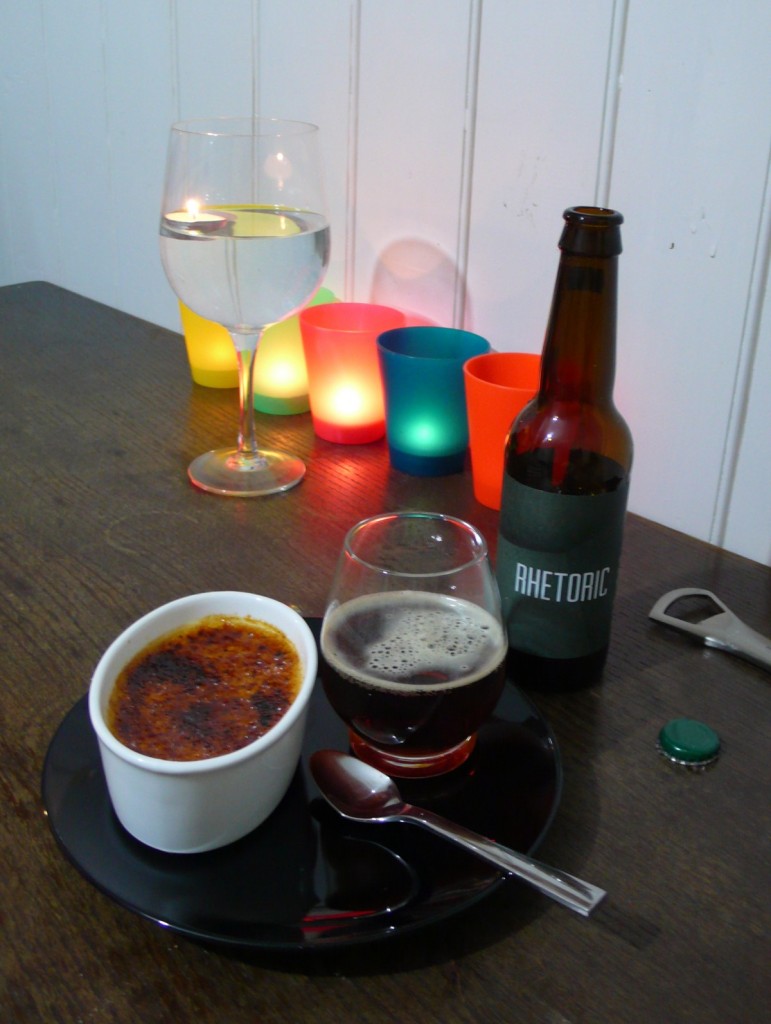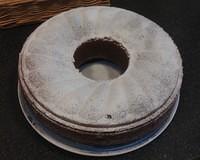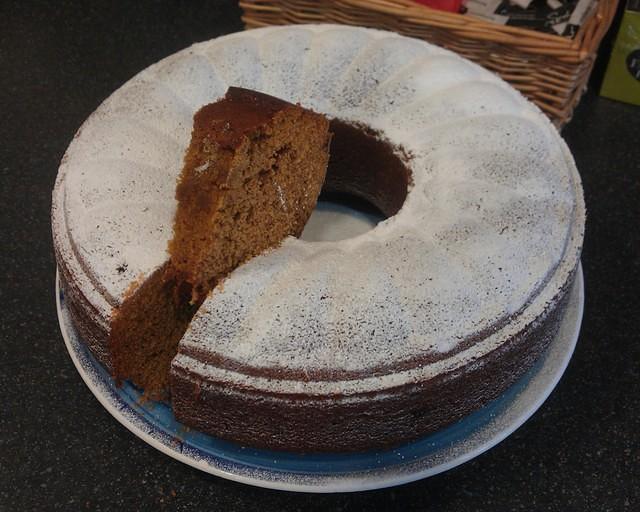This recipe has been devised in response to Hugh’s “Three Good Things” challenge. I am, of course, endeavouring to add beer as a sneaky fourth “good thing”. I’m adding it as a subtle addition — much the way the chefs in the TV episodes will gladly include brilliant oils, vinegars, stocks, and herbs without giving them a headline credit.
I recently found myself with a whole fallow deer carcass so I have a “glut” of venison at the moment. I figured apple + venison, a rich game meat and sweet apple… seems a pretty classic match. Amongst all the various cuts are a couple of chunky roasting muscles from each haunch (the “thick flank” I believe), this recipe makes use of one of these — it weighs in at about 850g.
I uhmmed and ahhed a lot about the third ingredient. Of all the extra bits I’d put with this what would be the natural one to highlight? Which one will shine the brightest? It became a toss–up between sage and bacon, and I settled on the bacon — adding extra punch by picking smoked bacon! Apples and pork, apples and bacon. Classic!
I’ve chosen to use Russet apples for their firm texture and slightly nutty savoury flavour. As luck would have it the day before the “apple challenge” was announced we’d picked up one of each variety of apple available at our local farmshop. We tasted all of these with some cheese, apple slices make a great alternative to crackers! So we’d got a little bit of prior research in to make an informed decision about the choice of apple. The farmshop, Willingham’s Bushel Box, is at the farm where the apples are grown — so they’re supremely local.
So, I present: Apple and bacon stuffed venison haunch joint, with apple gravy, and apple salad.
Stuffing
- 150g sausage meat
- 2 rashers smoked streaky bacon — roughly chopped
- 1 small Russet apple — 5mm dice
- sprig of roasmary
- sprig of sage
- 2 garlic cloves
- 6 juniper berries
- 3 tbsp of a rich red ale
- I’ve used Hardknott Infra Red, a 6% and particularly hoppy red ale from Cumbria and a long–time favourite beer of mine.
Crush up all the herbs and garlic in a pestle and mortar, loosen up with a little of the beer. With remaining beer rinse the pestle out into a bowl and add the sausage meat, diced apple, and diced bacon. Thoroughly combined, using hands of course, and ideally set aside for a while in the fridge so the flavours can develop.
Roast
- Stuffing mix above
- Venison “thick flank” — about 850g, or similar roasting cut
- 5 or 6 rashers of smoked streaky bacon
- 4 small Russet apples — quartered, unpeeled
- 6 fat garlic cloves
- Barding fat — pork back fat is the classic
- 250ml of the same red ale as used in the stuffing
- Some plain cotton string
- A large sprig of sage
Preheat oven to 220°C — or higher. (As I use very a heavy cast iron baking dish I pop that that in now too. My current oven is infuriatingly small, sticking a few kg of cold iron in it really sets the temperature back so I heat the pan up with the oven.)
Turn the joint of venison “ugly side up” and open it out along the grain of the meat. This is a combination of releasing the natural seams of the muscle and cutting into muscle butterfly–style. (I actually cut about 100g of meat out too to increase the size of the cavity. The offcuts are not wasted, they make a nice pre–dinner snack — dice it, mix it with left over stuffing: fry up as little patties!)
Line the middle of the opened out joint with about a strip of thinly sliced Russet apple rounds. Right down the middle lay two strips of streaky bacon, so they half lie out of the meat, put a “sausage” of just enough stuffing down the middle so that you can still comfortably wrap the meat around the lot (left over stuffing is expected — fry it up ad enjoy!) Wrap the stuffing by bringing the bacon up and over it. Lay the roast on 3 or 4 lengths of streaky bacon, which have in turn been laid on lengths of string of a suitable length to tie up the roast. It is difficult putting this to words, and it sounds more fiddly than it is by far! See the photos to get the idea:
Spread a bit of oil in the bottom of your roasting dish and place the roast into it bacon–side–up. Surround by wedges from 3 or 4 Russet apples, and the cloves of garlic which can just go in whole and unpeeled.
Into the oven for a sizzle! Do this until the outside has browned a little — 20 minutes in my case. Then reduce the heat to 180°C, baste with 3/4 of the beer, place the barding fat on top…
…and continue to roast until you reach an internal temperature of around 65°C (40 more minutes in my case). Remove from the oven and set the roast aside on a warm plate and cover with some tinfoil while it rests.
Now the apple gravy! This couldn’t be simpler. Carefully pour as much of the fat out of the roasting tin as you can, this can be discarded (or put to another use if you’re really thrifty). Remove everything remaining from the pan and place it into a food mill. Use the remaining beer to wash all you can out of the pan too. Mill it. Done! It should be a good thick consistency and beautiful rich, roasty, caramelised, beery, apple flavour. (It took quite some effort to stop myself just standing there eating this with a spoon!)
Salad
- 2 small Russet apples — medium dice
- Half a medium brown onion — fine dice
- 1 tbsp Rapeseed oil
- 1 tbsp Cider vinegar
- Pepper/Salt
- 3 or 4 fresh sage leaves — finely shredded
This piquant little apple salad cuts through the other rich roasty flavours in the plate — giving the whole meal a nice crisp lift. Simply toss it all together, adding pepper & salt to taste.
Serve!
Slice roast, place on warmed plate, apply gravy, add a pile of fresh apple salad. Enjoy! With a glass of Hardknott’s excellent Infra Red… duh :)
